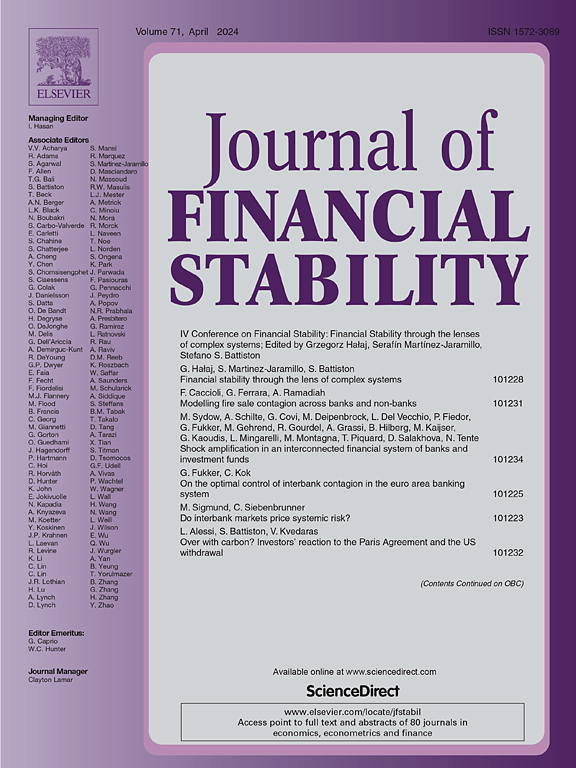Negative nominal rates
IF 4.2
2区 经济学
Q1 BUSINESS, FINANCE
引用次数: 0
Abstract
We show the possibility of negative nominal interest rates in a general equilibrium model with financial intermediation. We establish that the decentralization of the planner’s steady state requires a zero nominal lending rate on bank loans to firms, as well as a negative nominal lending rate on central bank loans to banks. We also find that implementing the planner’s steady state requires firms to be bound by collateral requirements that limit their leverage. The key driver of the results is the very defining characteristic of banking, namely banks’ ability to create money by opening deposit accounts that borrowers can withdraw from, and that are unbacked by household deposits. Our results can be used to rationalize the ultra-low rates policy implemented by major central banks in the second half of the 2010’s and early 2020’s.
负名义利率
我们展示了负名义利率在金融中介的一般均衡模型中的可能性。我们建立了计划者稳态的分散化要求银行对企业贷款的名义贷款利率为零,以及中央银行对银行贷款的名义贷款利率为负。我们还发现,实施规划师的稳定状态要求企业受到限制其杠杆的抵押品要求的约束。这一结果的关键驱动因素是银行业的一个非常明确的特征,即银行通过开设借款人可以提取的存款账户来创造货币的能力,这些账户不受家庭存款的支持。我们的研究结果可以用来合理化主要央行在2010年下半年和2020年初实施的超低利率政策。
本文章由计算机程序翻译,如有差异,请以英文原文为准。
求助全文
约1分钟内获得全文
求助全文
来源期刊

Journal of Financial Stability
Multiple-
CiteScore
7.70
自引率
9.30%
发文量
78
审稿时长
34 days
期刊介绍:
The Journal of Financial Stability provides an international forum for rigorous theoretical and empirical macro and micro economic and financial analysis of the causes, management, resolution and preventions of financial crises, including banking, securities market, payments and currency crises. The primary focus is on applied research that would be useful in affecting public policy with respect to financial stability. Thus, the Journal seeks to promote interaction among researchers, policy-makers and practitioners to identify potential risks to financial stability and develop means for preventing, mitigating or managing these risks both within and across countries.
 求助内容:
求助内容: 应助结果提醒方式:
应助结果提醒方式:


